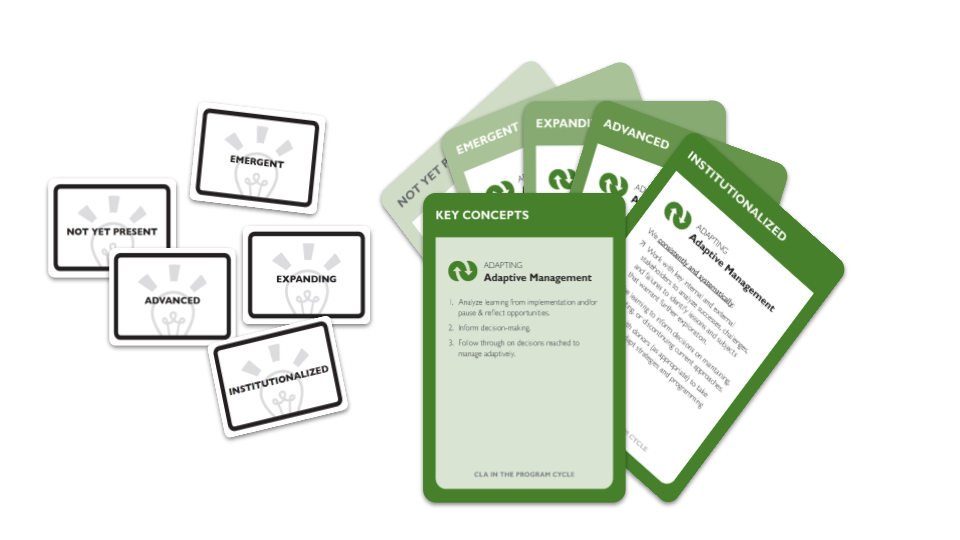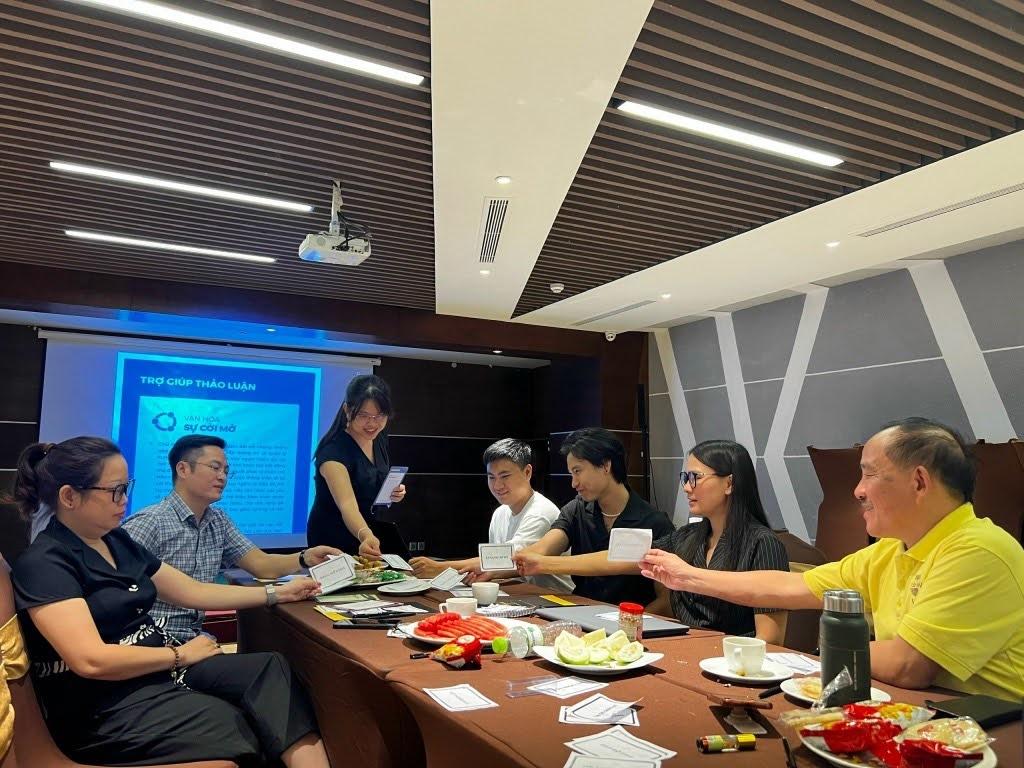Five Lessons and a Lingering Question About Using the Collaborating, Learning and Adapting Maturity Tool
The CLA Maturity Too strives to “walk the talk” on CLA. While many organizational assessments are completed by external management consultants, this self-assessment approach encourages teams to identify their own focus areas and commit to self-identified incremental improvements. In that spirit of collaboration, openness and continuous learning, we offer some reflections on lessons we’ve learned about using the tool over the past several years. And acknowledge a persistent challenge that we will continue to problem-solve around.
Lesson 1: An iterative approach is critical: The tool would not have been as successful or as high quality had it not been for the iterative approach to its development. The rapid feedback loops we designed into early stages of tool development meant the tool was consistently improved upon. In addition, telling participants and users that this is a work in progress (that we were on version 4 or 5 and planning more versions) increased their comfort in giving us candid feedback. They knew we needed it to improve in the next iteration. While there has been a lag of several years between versions 7 and 8, we remain committed to continuing to improve the tool through feedback and iteration.
Lesson 2: Gamifying the self-assessment process contributes to an interactive and unique learning experience. A key challenge was creating a tool that did not feel like a ‘test’ to users. When mission staff were initially told about the pilots, many were concerned their colleagues would feel ‘audited.’ This was the exact opposite of the effect we wanted to create - the point is to have a conversation that sparks learning, not to assign critical judgments. Gamifying the process helped do just that. The tool uses cards - one set that describes the stages of CLA maturity for the sub-component and another with each stage label that each “player” puts down to share their opinion on where they think their team is on the spectrum. This helped depersonalize the conversation and make the process itself interactive and engaging.


Lesson 3: Language matters. We spent a lot of time reworking the stage labels and tweaking the facilitation language to set a tone for the self-assessment that felt appreciative and generative while still honest about areas for growth. In addition, we invested extra time to ensure participants’ conceptual understanding so that during the self-assessment, they are able to meaningfully discuss differences in perspective. Similarly, we’ve learned that it is advantageous to have these conversations in participants' native languages whenever possible. The original CLA maturity tool has been translated into French, Spanish, and Arabic, while the implementing partner version has been translated into Vietnamese. Once participants understand how concepts like internal collaboration, knowledge management, continuous learning, and organizational culture show up in their own workplace, they can use the tool to identify areas of growth that matter most to the team.
Lesson 4: Facilitation is critical. While the maturity tool is broadly intuitive, it is not a panacea - facilitation is still necessary. Effective facilitation skills are the basis of a good self-assessment and action planning process. This means having someone who can challenge participants, ask follow-up questions, make sure everyone's opinions are heard, and help the group move toward action.
Lesson 5: Encourage incremental and realistic action planning that connects to an existing process. While effective action planning and follow-through can still be a challenge for many teams, it seems to be more effective when action planning sessions are explicitly tied to work planning and implementation processes that are already being used. Creating new spreadsheets and trackers for acting on CLA, separate from other processes, means steps are more likely to be lost or abandoned. And don’t over plan! A simple “top 10” (or even “top 5”) list of smaller-scale, incremental changes can help teams build momentum for larger reforms without feeling too burdensome, heavy, or unrealistic.
A Lingering Question: How might you gamify action planning so that it maintains that same kind of generative energy as the self-assessment process? As much as people seem to enjoy the self-assessment process, they tend to lose steam when the time comes for action planning. True, it's easier to talk about our issues than figure out how to resolve them and then actually follow through. At the same time, though, perhaps we can apply the lesson about gamification to help address this persistent challenge. What do you think? We’d love to hear your perspectives on the USAID Learning Lab LinkedIn page.



